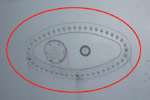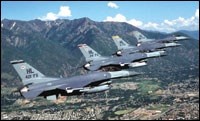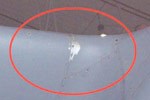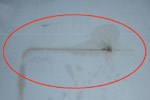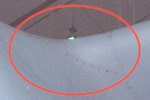Cross Into Chrome Free Pretreatment
Hill AFB experimented with several non-chromate coatings for use on its F-16s before it found the right one…
Elimination and reduction of chromates in maintenance operations has long been a goal of the Air Force. Modern aircraft coating systems use polyurethane topcoats and chromated epoxy primers, which effectively curb corrosion. As long as the primer contains chromates, the system will provide good corrosion resistance on the aircraft. However, the Air Force has examined non-chromate conversion coatings in an effort to find a product that is environmentally favorable and provides excellent corrosion resistance.
Hill Air Force Base (AFB) conducted tests on several non-chromate conversion coatings. This was done in an effort to reduce or eliminate chromate compounds in the paint preparation process for aircraft, particularly F-16s.
Featured Content
The paint shop at Hill AFB had used VOC compliant primers and high-solids paints; however, these first paints did not adhere to the aircraft. There were two reasons for this: 1) Cleaning and pretreatment were inadequate; and 2) Bonding the primer to the anodized surfaces of previously painted aircraft was a problem.
These determinations initiated a study on non-chromate conversion coatings. The objective was to eliminate the use and disposal of chromate containing materials in the paint preparation process. Performance was based on Mil-C-5541, Class 1A. This specification calls for three tests: corrosion resistance, paint adhesion and workmanship. However, in this particular study, nine tests were conducted to evaluate the products. Not all materials were subjected to all the tests. All but one non-chromate conversion coating was eliminated on the basis of initial testing. Initial testing included the following:
Uniform Color: The non-chromate conversion coating must indicate that the surface is clean enough to accept the primer and provide good adhesion. The coating should also be stable enough to store for weeks without significant degradation.
Bonding in the Presence of Known Contaminants: Obviously, the non-chromate conversion coating had to be able to create a bond between the substrate and paint. The media blasting was used to remove paint residue left on the surface that was difficult to remove.
Corrosion Resistance: The coatings had to survive the salt spray requirements of Mil-C-5541. A 90-day test in a 5% salt spray environment was used.
Ease of Application: Coatings had to be easy to apply and handle.
Hydrogen Embrittlement: Although this testing is not normally required for non-chromate conversion coatings, this test was added because one of the candidate coatings had a two-hr dwell time.
Kapton Wire Testing: This test was requested even though the possibility of contact with aircraft wings is remote.
Adhesion Testing: Wet tape testing (Fed-Std-141C, Method 630.1) was performed on painted panels. The crosshatch test (ASTM D-2259-93, Method B) was added. The final candidate was also tested with the Hesiometer.
Flexibility: Mandrel bend testing was performed on treated, painted panels and compared to results with standard chromate conversion coating treatments.
Surface Analysis: The surface was analyzed using electron spectroscopy for chemical analysis. This identified surface changes in the aluminum substrates caused by the chemical treatment.
Four non-chromate conversion coatings were tested. To assure that the coatings were properly mixed and applied, representatives of the companies were at Hill AFB to help prepare samples. As failures occurred and other problems were encountered, the companies were permitted to modify the product. Testing proceeded until it was decided that further testing would be futile. Hill AFB eventually chose Product D, PreKote.
Hill AFB prepared the right wings of two F-16 aircraft with PreKote. The remainder of each aircraft was prepared using a chromate conversion coating. These aircraft had been fully stripped using plastic media blasting. After painting, the aircraft were returned to their units.
Three months later, the aircraft were examined. The entire paint job on each aircraft was very good. On aircraft 83-1123 stationed at Eglin AFB there were several small chips of paint missing on the left wing; the right wing had only one chip. The left wing of aircraft 86-0215 at Homestead AFB showed some paint cracking along with wear marks from rubbing where the flap is hinged. The same spot on the PreKote treated wing showed normal wear but no cracked paint.
The new process helped the Air Force eliminate numerous hazardous products as well as save on disposal costs. With the non-chromate conversion coating, finishers required less time to prepare and paint the aircraft. The Air Force estimates that a cost avoidance of up to $2.23 per sq ft of surface area treated has been realized. Since an F-16 has approximately 4,000 sq ft of painted surface area, this could result in a savings of up to $8,929 per aircraft.
The Air Force also estimates that for all aircraft coated in 2001, the non-chromate conversion coatings helped reduce labor by 35%, saving $1,600 per plane for a total savings of $134,400.


